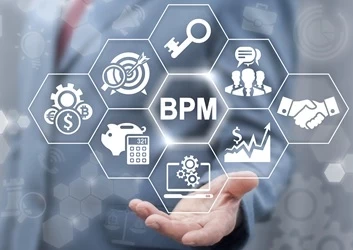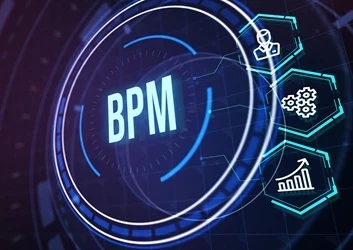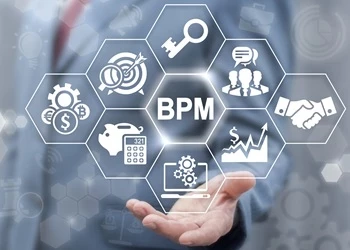Is it pointless trying to map a collaborative process?
Add bookmarkThe nature of work has become more collaborative, fuelled by new applications, and super-charging the old ways of working. But process mapping was designed for linear processes. So is it madness to try and map a collaborative process?
|
More and more corporate applications have a social or collaboration element to them. Either because it is embedded or because alongside the application there is a collaborative application such as tibbr, Yammer, Chatter or one of the many other social applications that are springing up. Social - bolting a supercharger on business The nature of work has become more collaborative, fuelled by new applications. They are super-charging the old ways of working. Before the only way of collaborating was putting everyone in the same room. |
Is this what work looks like in the twenty first century? |
Then telephones and video came along and distance didn't matter - but time did. You all had to be available.
But now collaborative, social applications enable discussions to be held with people around the world based on their desire to contribute when they want to. Time and distance do not matter. Synchronous becomes asynchronous.
This has suddenly changed the dynamic of call centers solving customer problems and sales teams developing complex proposals for clients - to name just 2 areas. Another area is where the collaboration crosses the corporate boundaries where there are multiple organizations involved.
As many of the social apps are cloud based they do not hide behind a firewall. So processes that partially outsourced or have multiple 3rd parties involved can work more effectively.
[eventPDF]
Process mapping is linear, or at least it used to be
Having spent the last 15 years in Nimbus process mapping processes I thought I'd got pretty good at it. And the acquisition by TIBCO didn't really change that. Now Nimbus had the corporate backing to be able to work with even bigger clients. Still the majority of the processes were linear. But that has been changing gradually over the last few years, and in the last 12 months more and more corporate processes have some level of collaboration.
Corporate event management
I am in investor in LessEventAdmin. It is a cloud based application for collaboration around planning and managing an event. It could be a user group, exhibiting at a conference or an internal event. It is a naturally collaborative process as they wrote in a recent blog called Corporate event planning and management goes social citing the need for the product:
It is difficult to think of any corporate activity that requires more collaboration and involves multiple 3rd parties. It also has the highest levels of risk as it has a deadline that is fixed and the responsibility is left to a relatively junior person in marketing and there is little or no formal mechanism for tracking. And finally, it is probably one of the largest major external budget items.
If I think back to my days as CEO of Nimbus, we ran a fantastic user event with over 500 delegates. In fact 60% of our marketing budget was spent on events. All of this was managed by a single person using email and spreadsheets. Fortunately she was very good and was never sick. But that doesn't mean we couldn't have done it more intelligently. At a senior level we were blind to progress and costs.
Process mapping collaborative processes
So, as investor, I have suggested that we should provide a methodology or process map to support event managers who have less experience. And hopefully will encourage them to use the application.
So at the weekend we started to process map the end to end process. At the top level it is straight forward. There are some distinct phases for an event. Just defining these different phases is valuable. Each phase involves different people, happens at a different pace and has different levels of risk, sign-off and stress.
Until it is spelt out it is easy to just launch into "running an event" without much real thought. In many companies running a new event is simply thrust onto the PA of a senior exec or one of the marketing team.
The different stages of running an event (Click to enlarge)
But the levels below this top level phase diagram is when it started to get more difficult. We wanted the process diagrams to be valuable and not the "and a miracle happens here" approach.
The first phase - idea generation - can be mapped fairly easily. As can the second because planning has a couple of steps around agreeing to run the event and signing contracts and then a series of parallel events as each area or stream of work is planned; brand, stand, marketing material, staffing, logistics, sponsors etc.
But the "mobilization phase" is tricky. This is where each stream of work is delivered but lots of 3rd parties all collaborate to get the job done. The only linear process is the management and monitoring. Showtime is easier. There are some obvious steps. And feedback is very much like the ideas step.
Process mapping is now obsolete
Does this experience suggest that process mapping is obsolete in our newly highly collaborative connected world? Our experience would say no. Not because I want to justify the existence of Nimbus or the other process mapping applications out there, but because not every step of every process at every level is collaborative. Remember why we wanted to map in the first place, to be able to
- define an agreed process, understand it better and improve it
- work out what can and should be automated
- provide process maps can be used as a "training manual" for staff.
So there is a time and a place for process mapping. As more processes become collaborative those places are dwindling. But just as areas of a business with highly qualified staff have less need for process maps - think surgeons in hospital - there will be areas of a business which are highly collaborative. But to ignore the illuminating power of process mapping would be foolish.
Want to find out more about BPM solutions available?
BPM Open House is a free online event that will give you a first hand look at the BPM solutions available and the chance to hear from those who have successfully implemented and used BPM to meet their business objectives. Find out more and register for free

























